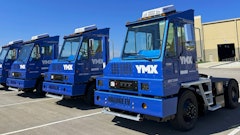
A LeanDNA survey, conducted by Wakefield Research, reveals a significant disconnect between C-level executives and supply chain leaders regarding the strategic role of supply chain in driving business growth.
“Even as many companies rely on smooth supply-chain operations to keep their company going, and as most executives acknowledge supply chains as growth drivers, there’s still a disconnect in linking those concepts,” says Andy Ellenthal, CEO of LeanDNA. “For 85% of C-Level executives and 94% of supply chain leaders, their company’s top leadership is still skeptical of the link between supply-chain resiliency and business growth. That lack of effective communication from the supply chain probably isn’t helping.”
Key takeaways:
- While a majority in both groups recognize supply chain as a growth driver, supply chain leaders see themselves as such (85%) compared to C-level executives (70%). This 15-point gap suggests a potential misalignment in investment prioritization and the level of attention supply chain leaders receive from top leadership.
- Despite this gap, nearly half (46%) of C-level executives expect supply chain operations to increase in visibility within the C-suite over the next 12 months, with planned increases in staffing (41%) and investments (38%).
- Both groups agree on the primary benefits of digital supply chain synchronization, citing enhanced supplier reliability (54% and 53%), increased growth and revenue (51%, 53%), and improved on-time delivery (48%, 49%).
- Executives and supply chain leaders differ in their prioritization of risks associated with delaying operational innovations. Executives are most concerned with increased production disruptions (53%) and slower response to market fluctuations (43%), while supply chain leaders prioritize higher inventory costs, reputational damage, and lost revenue (53% each), as well as regulatory compliance risks (50%).
- 99% of executives and 100% of supply chain leaders acknowledge that supply chain leaders struggle to articulate the value they bring to the company. Moreover, 55% of executives and 61% of supply chain leaders believe the onus is on the supply chain side to improve communication.
- Supply chain leaders’ top concerns include balancing sustainability goals (41%), handling compliance and regulatory changes (41%), and reducing costs without compromising delivery performance (37%). Executives, on the other hand, are most worried about managing disruptions from material shortages or delays (38%) and balancing sustainability with operational efficiency.




















